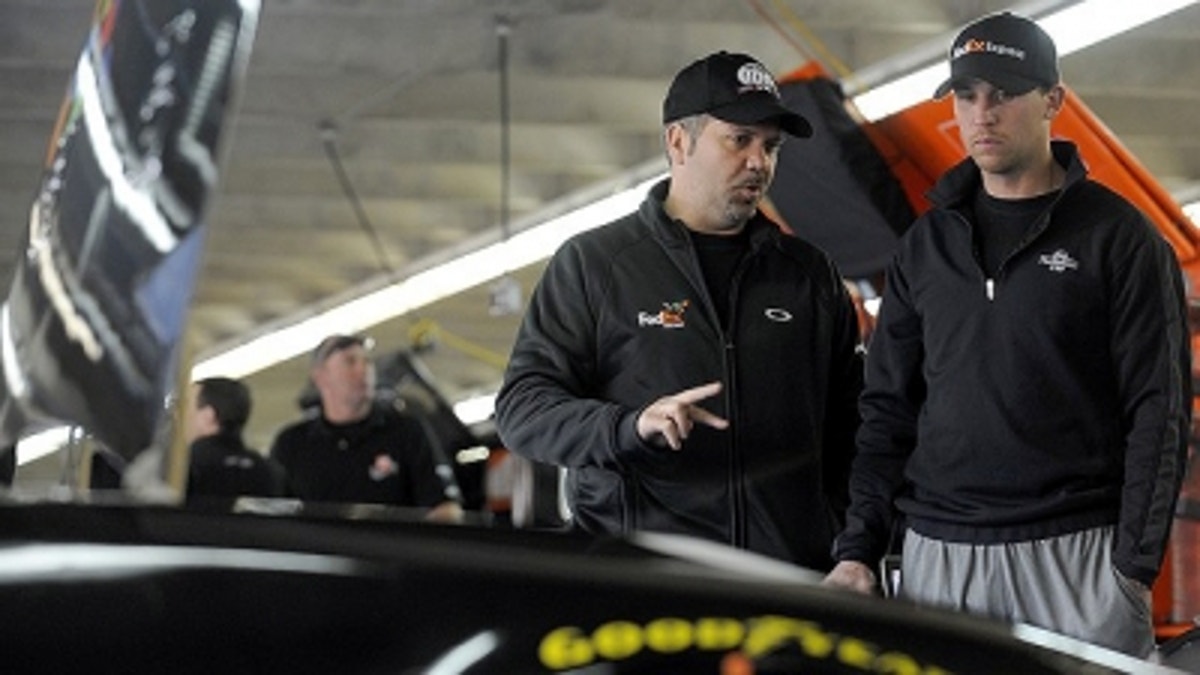
If you want to know what to expect in the 2013 NASCAR Sprint Cup season, when the new-generation race cars hit the track, all you have to do is look back three years.
The 2010 Sprint Cup season opened with then four-time defending series champion Jimmie Johnson dominating the early action. Johnson won the second race of 2010 on the 2-mile Auto Club Speedway oval, then followed that a week later with a victory on the 1.5-mile Las Vegas Motor Speedway oval. Two weeks afterward, Johnson was in Victory Lane again at the 0.533-mile Bristol Motor Speedway oval, historically one of his weakest tracks.
Three wins in four weeks on four wildly different tracks for Johnson.
And then it all changed.
When the Sprint Cup circuit rolled into Martinsville Speedway the next weekend, NASCAR instituted a rule change. Gone was the ugly rear wing that had been part and parcel to the Car of Tomorrow since its introduction in 2007.
In its place, NASCAR mandated a traditional rear blade spoiler, something more aesthetically pleasing than the awkward wing, and more familiar for NASCAR fans, as well.
Unbolt the wing, bolt on the spoiler. Simple, right?
Uh, no.
Suddenly, once the spoiler was back, Joe Gibbs Racing went on an amazing hot streak. Denny Hamlin won at Martinsville and Texas in April, Darlington in May, and captured back-to-back victories at Pocono and Michigan in June. Kyle Busch won consecutive May races at Richmond and Dover. After being shut out of the first five races of 2010, JGR won seven of the next 10 once the rear wing was replaced by the spoiler.
For Hendrick Motorsports, it was just the opposite: After winning three of the first five races of 2010, Johnson won just three of the final 31 races. And his three Hendrick teammates that year — Jeff Gordon, Mark Martin and Dale Earnhardt Jr. were completely shut out of the win column. Although Johnson would go on to narrowly defeat Hamlin for his fifth consecutive title, Gordon fell from third in points in 2009 to ninth in 2010, with Martin nosediving from second to 13th.
All of which brings us to 2013 and the new G6 NASCAR Sprint Cup cars, G6 standing for sixth-generation. The new cars — Chevrolet SS, Ford Fusion and Toyota Camry — all are radically different than the 2012 models, especially in terms of aerodynamic profiles.
And just as JGR did in 2010, some enterprising team will come out of the box well ahead this year. The only questions are which team or teams will it be and how long until the competition catches up?
Hamlin, for one, is hoping history repeats for JGR.
“You want to be the first to get the edge,” said Hamlin, who won a career-high eight races in 2010, the year of wing-spoiler change. “You want to be the first guy to hit on whatever makes your car go a little bit faster than everyone else. There's a window there, and we've really kind of all maxed out the car that we have now with the aero or what have you, and that's why the competition was so close.”
Hamlin thinks the new cars could be a game-changer.
“Now, you could have the potential to see someone ring off eight or nine wins (this) year if they hit the 2013 car setup early,” he said.
So it’s a whole new ballgame this year.
“A lot of things are going to change,” said Hamlin. “I know at Joe Gibbs Racing, we're going to be changing our whole fleet of cars. It's not just the shell on the body that changes. … It's in different bars and the ways the cars are built for safety reasons. I know that Toyota has really worked hard on making this Camry something that their owners can identify with. We're changing everything. … There's a lot more that's going to be changing with our 2013 car than just what the fans see from the outside.”
Tom Jensen is the Editor in Chief of SPEED.com, Senior NASCAR Editor at RACER and a contributing Editor for TruckSeries.com. You can follow him online at twitter.com/tomjensen100.
